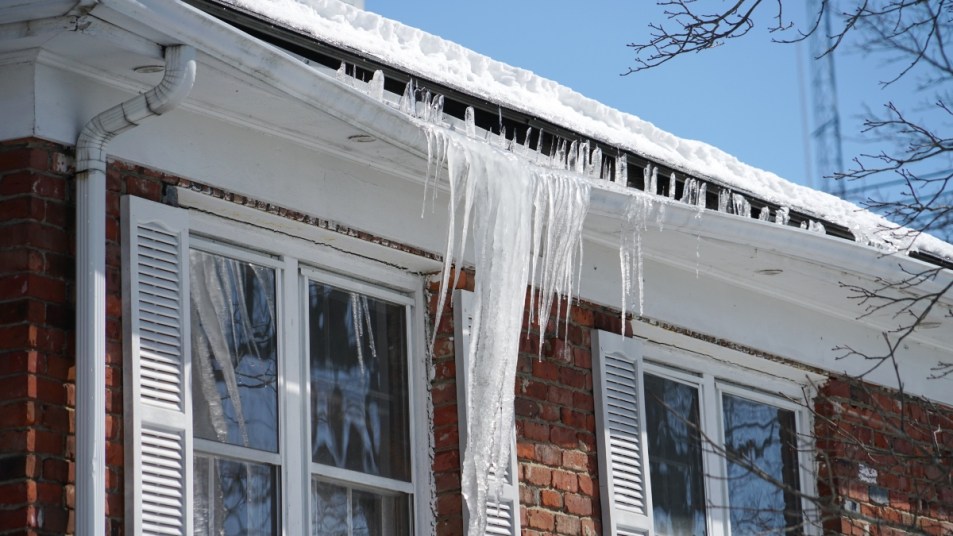Experts Share 3 Simple Ways to Avoid Winter Home Damage — From Chimney Fires to Burst Pipes
Protect your house this winter.

While the weather outside is frightful, you can ensure you’re safe inside — at least, until a pipe freezes and bursts, or excessive ice causes flooding. It might seem pessimistic to look out at a gentle snowfall and immediately worry about the safety of your home — but remaining proactive can help prevent a disaster. We asked the experts for some quick tips to avoid winter home damage this year, so you can stay safe and cozy all season long.
Prevent chimney fires with the right wood.
Wood stoves and fireplaces cause more than 4,000 fires a year. And one of the top culprits is creosote, the unburned hydrocarbons in wood. “Creosote is highly flammable,” explains Russ Dimmitt of the Chimney Safety Institute of America (CSIA). “And the substance can build up when wood is too ‘wet.’” The fix: When buying it, look for wood labeled “seasoned” — this means it’s been dried out for at least a year. Using your own? You can tell if it’s seasoned when the bark is loose and the logs’ ends are cracked.
Also smart: Avoid tossing paper into your fireplace. Wrapping paper, cardboard, and newspaper can create too much heat, leading to a fire.
Avoid burst pipes with a slow drip.
When it’s below freezing, water expands and contracts. And if your pipes aren’t protected, they may burst or freeze shut, warns plumber Simon Seys of PlumbingInstantFix.com. “But water that’s constantly moving won’t freeze, so just leave a cold water tap slowly dripping in one of your sinks,” he suggests. You can also buy insulators for pipes at any home improvement store — they look like pool noodles, easily slip on, and cost only a few dollars.
Also smart: Keep your house at 65 degrees Fahrenheit or higher when temperatures drop below zero. Additionally, open cabinet doors under sinks in your bathroom and kitchen to allow heated air from your home to circulate around the pipes and keep them warm.
Ward off flooding with “salt socks.”
Snow and ice are tough on your roof, particularly if an ice dam forms. This happens when warm air escaping the uppermost part of your roof causes snow to melt, which then refreezes by the time it gets to the lower part of the roof. This then forms an ice barrier that can pull gutters off your house and may even result in flooding inside. The simple solution, says roofer Matt Wooldridge of Invision Roofing: “Fill a few old socks with road salt and toss them 5 to 6 inches away from the roof edge along the dam — they’ll dissolve the ice fast.”
Also smart: Since heat escaping the attic leads to ice dams, spreading a few boxes along the floor can help trap warm air below.
This article originally appeared in our print magazine, First For Women.
















